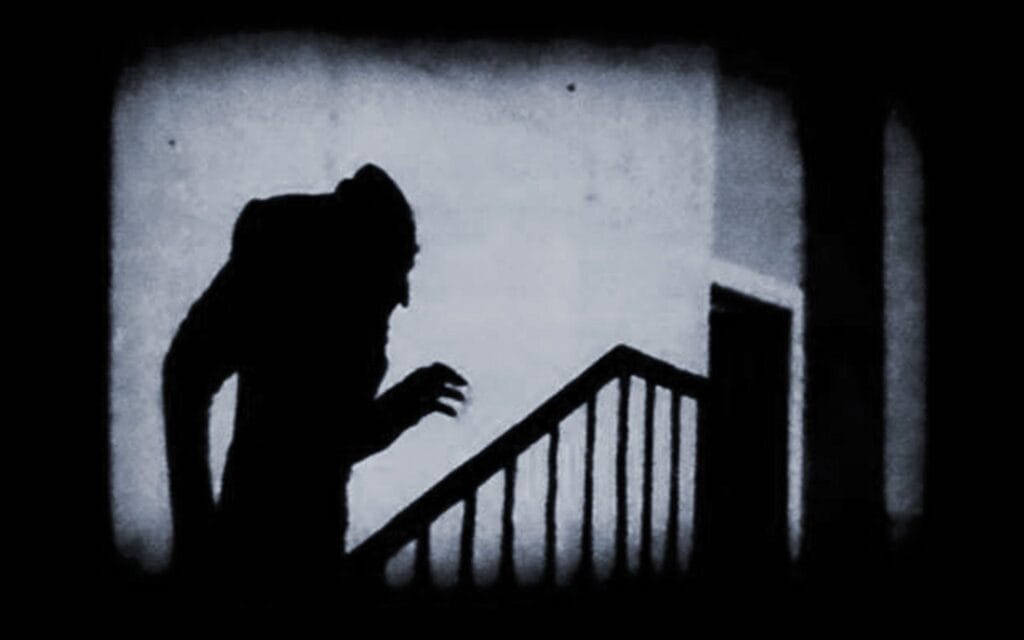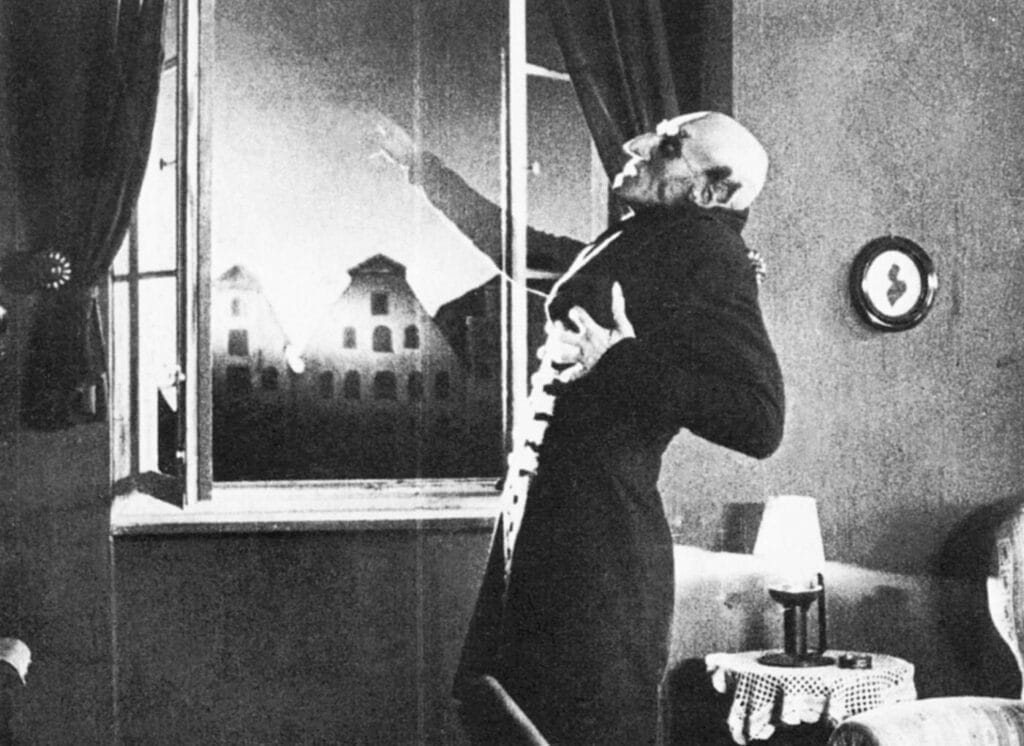Nosferatu, released in 1922, is a silent German Expressionist film that is regarded as one of the earliest and most influential horror movies in cinema history. Adapted from Bram Stoker’s novel Dracula, the film was directed by F. W. Murnau and starred Max Schreck as the titular vampire, Count Orlok. Although the film faced legal disputes for copyright infringement, Nosferatu’s unique visual style and chilling atmosphere continue to inspire filmmakers and audiences alike.

The Origins of Nosferatu
When director F. W. Murnau set out to make a film adaptation of Dracula, he encountered a significant obstacle: the Stoker estate refused to grant him the rights to the story. Undeterred, Murnau and screenwriter Henrik Galeen decided to create their version of the tale, altering character names and details while retaining the overall plot. Thus, Count Dracula transformed into Count Orlok, and the story of Nosferatu was born.
The Plot
Set in the early 19th century, Nosferatu follows the journey of Thomas Hutter, a real estate agent who travels to Transylvania to finalize a property deal with the enigmatic Count Orlok. Unbeknownst to Hutter, Orlok is a vampire, who becomes infatuated with Hutter’s wife, Ellen. After finalizing the deal, Orlok moves to the small German town where Hutter and Ellen reside, bringing with him a reign of terror and mysterious deaths. As the town falls into chaos, Ellen discovers that she is the key to ending Orlok’s evil and must make a heart-wrenching sacrifice to save her loved ones.

Innovative Visual Style and Techniques
Nosferatu is notable for its striking visual style, which was heavily influenced by German Expressionism. This artistic movement sought to convey complex emotions and themes through exaggerated, distorted visuals, and Nosferatu is no exception. The film is filled with eerie shadows, distorted perspectives, and stylized sets that create a surreal, otherworldly atmosphere.
One of the most iconic and enduring images from Nosferatu is Count Orlok’s haunting silhouette, with elongated fingers and hunched posture. This powerful image has since become synonymous with the vampire mythos and has been imitated and referenced countless times in popular culture.
Legal Disputes and Near Destruction
Nosferatu’s unauthorized adaptation of Dracula led to a lawsuit from the Stoker estate. As a result, a court ordered that all copies of the film be destroyed. Fortunately, some prints survived the destruction, and Nosferatu was eventually rediscovered and restored. The film’s survival is a testament to its enduring appeal and importance in cinema history.
Legacy and Influence
Nearly a century after its release, Nosferatu remains a highly influential film in the horror genre. Its unsettling atmosphere and innovative visuals have inspired countless filmmakers, including Werner Herzog, who directed a homage to the original with his 1979 film Nosferatu the Vampyre, starring Klaus Kinski. Nosferatu also laid the groundwork for vampire films that followed, such as the Universal Studios’ classic Dracula (1931), starring Bela Lugosi, and Hammer Films’ Dracula series, featuring Christopher Lee.

Nosferatu’s impact on the horror genre and cinema as a whole cannot be overstated. Despite facing legal challenges and the threat of oblivion, this classic film continues to captivate audiences with its chilling atmosphere, innovative visual techniques, and memorable performances. As one of the earliest horror films, Nosferatu remains a testament to the power of cinema to evoke fear and transport viewers into a nightmarish world.
